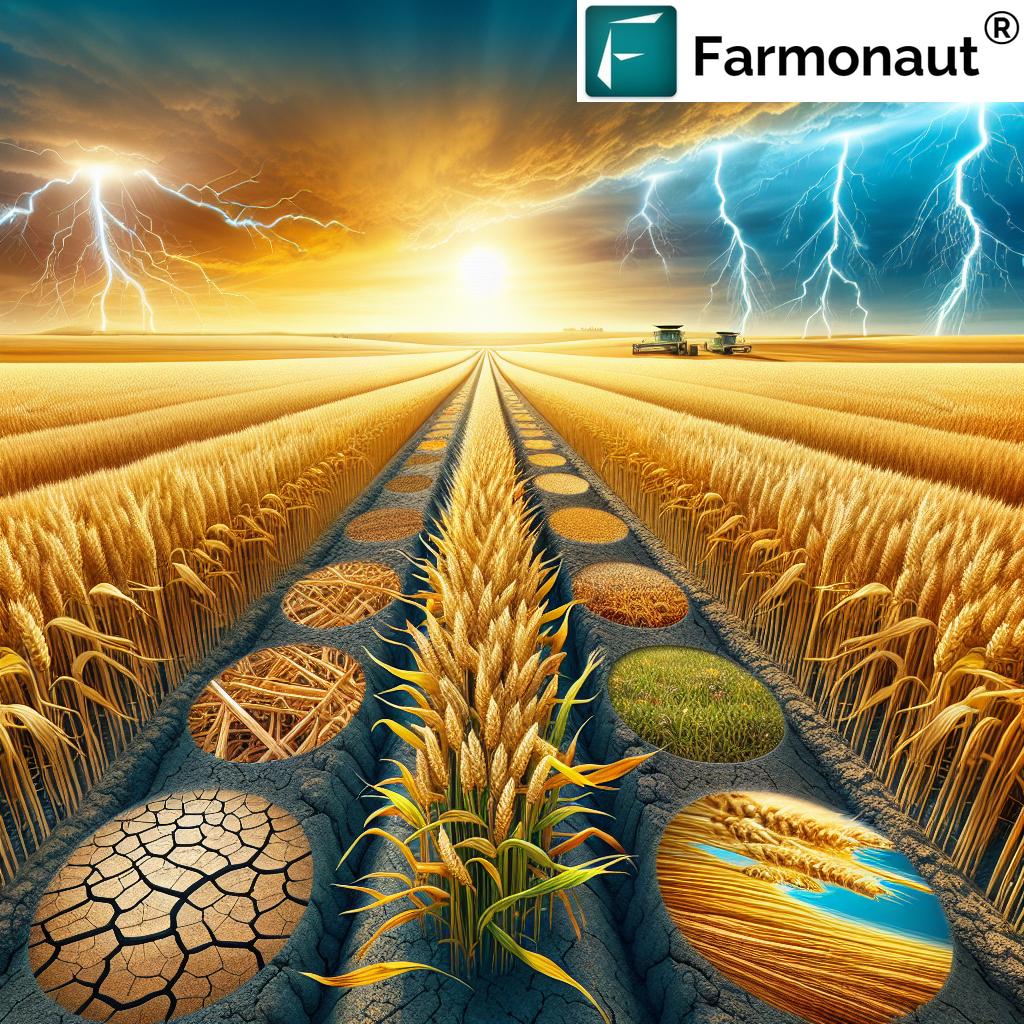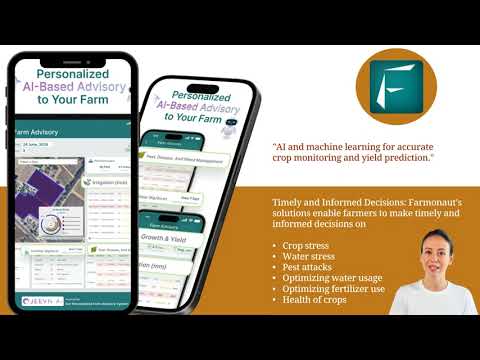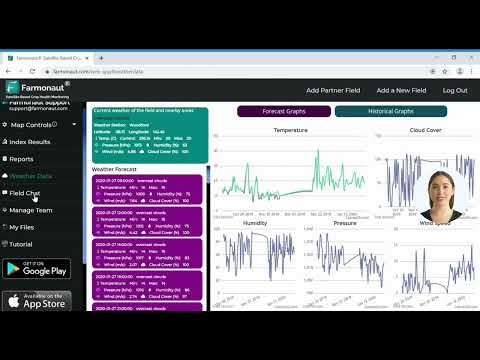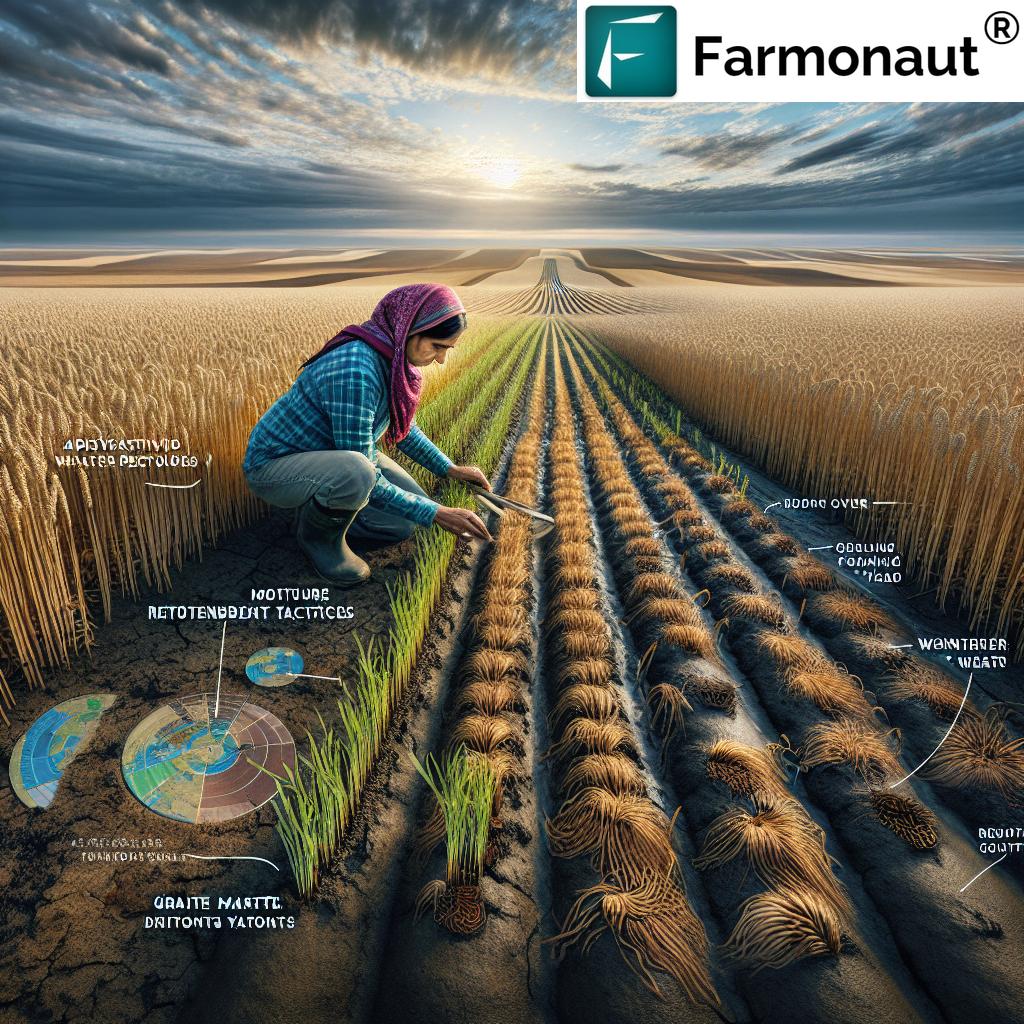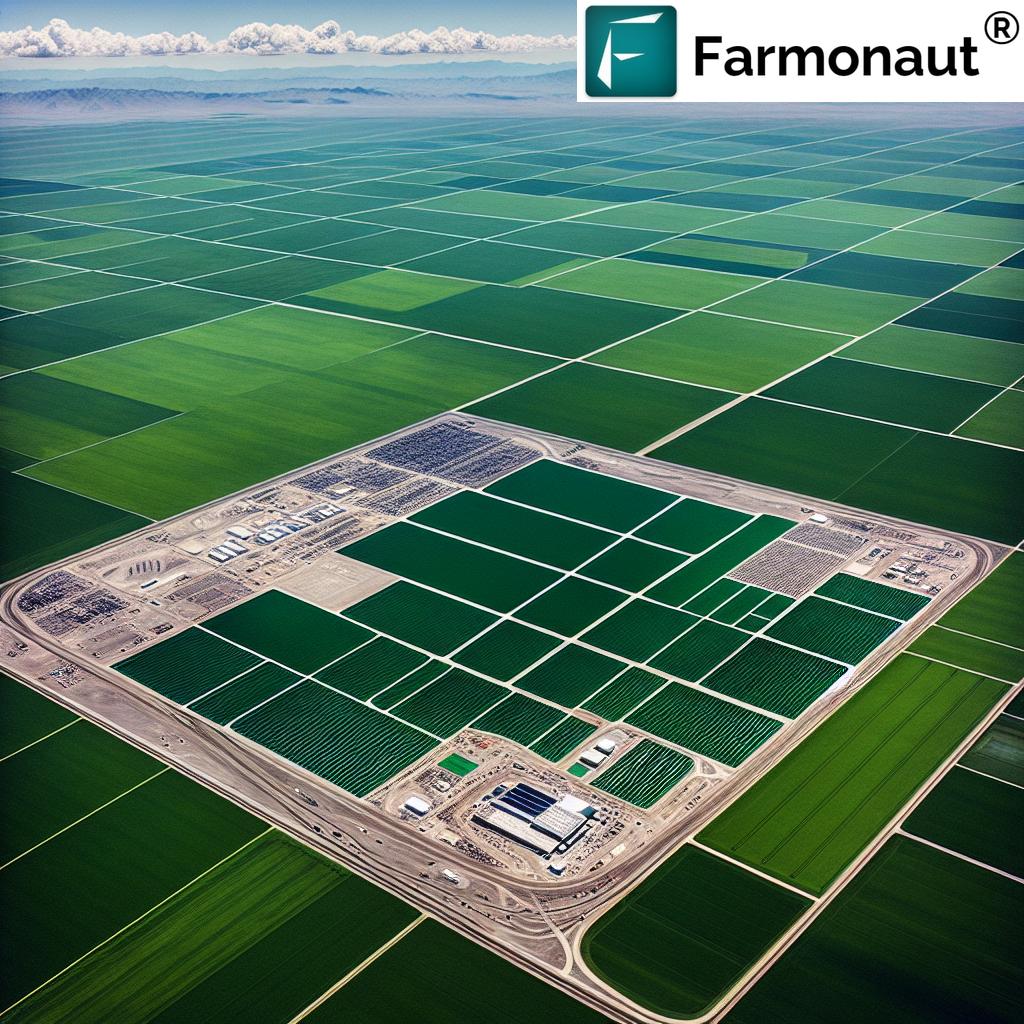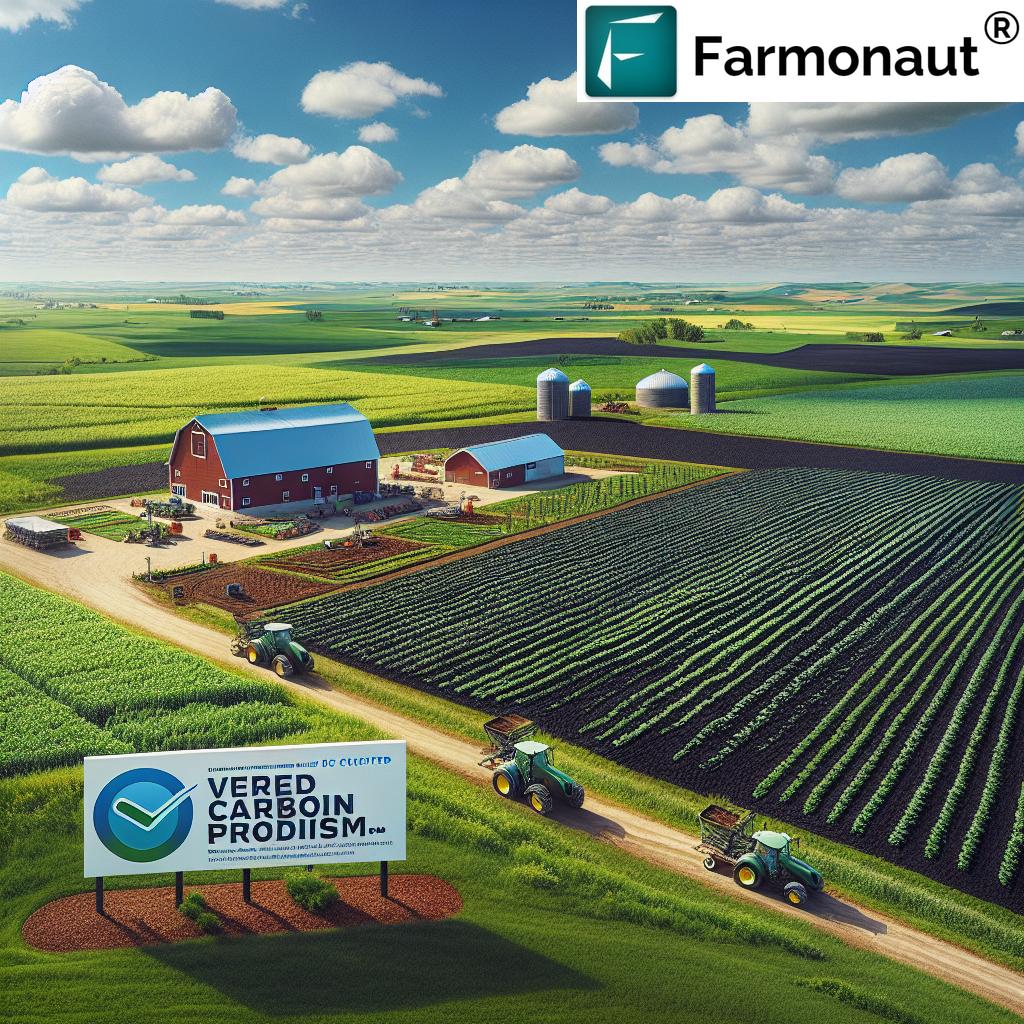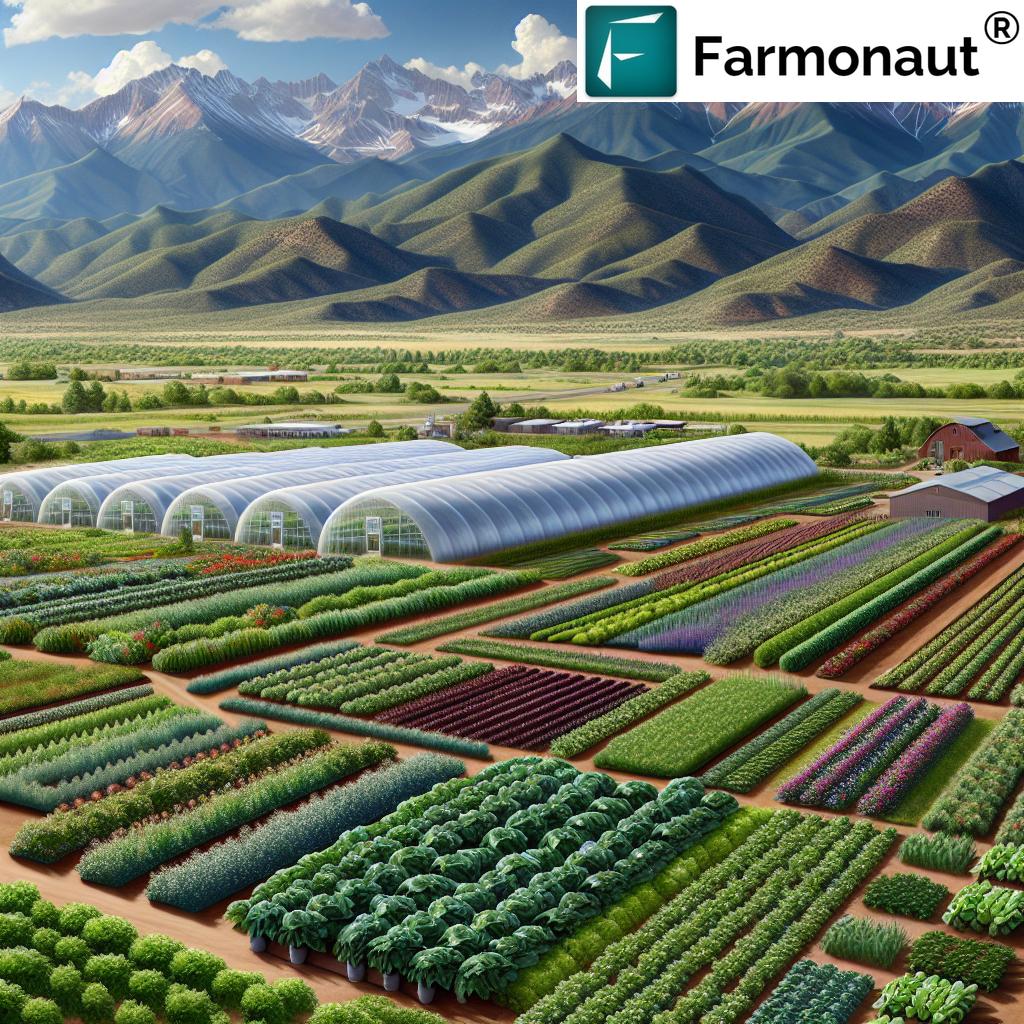Table of Contents
- Introduction
- Overview: Kansas, Winter Wheat, and the Nation’s Food Supply
- Kansas Winter Wheat Yield: 7 Shocking Boosting Secrets!
- 1. Understanding the Climate: The Biggest Yield Driver
- 2. Soil Health and Wheat Farming: Building Resilient Foundations
- 3. Wheat Planting Dates in Kansas: Timing & Techniques
- 4. Smart Nutrient and Nitrogen Management
- 5. Leveraging Innovative Technology: Farmonaut’s Satellite Solutions
- 6. Navigating Economic Factors and Market Dynamics
- 7. Adaptive Strategies for Kansas Wheat Farmers
- Key Factor Impact Comparison Table
- Farmonaut Solutions & Subscription Options
- FAQs: Kansas Winter Wheat Yield Optimization
- Conclusion
Kansas Winter Wheat Yield: 7 Shocking Boosting Secrets!
When we think about agriculture in the United States, it’s impossible to overlook the immense impact of Kansas winter wheat yields. As one of the top wheat-producing states, Kansas doesn’t just support our own economy—it supplies an essential staple for the nation and the global food market. Yet, achieving high, sustainable yields in winter wheat production here isn’t simply a matter of traditional farming. It’s the result of science-driven practices, climate adaptation, market-savvy strategies, and, increasingly, innovative technologies that empower farmers to thrive amidst mounting challenges.
We are here to reveal the 7 most shocking secrets to optimizing Kansas winter wheat yields—from practical on-farm improvements to advanced satellite and AI-driven insights. We’ll also discuss how soil health, climate factors, optimal planting dates, and market adaptation converge to shape your success. Let’s explore, adapt, and boost winter wheat production together!
Overview: Kansas, Winter Wheat, and the Nation’s Food Supply
Kansas stands tall as a leading producer of winter wheat in the United States, consistently contributing to both state and national food security. The factors influencing our wheat production in Kansas—from the unpredictable climate and vital soil health to rapidly shifting market conditions—are as varied as they are critical. Recent years, such as 2023, illustrate the complex interaction between drought, changing precipitation patterns, and global supply dynamics.
Through a blend of research, practical insight, and technology, we can navigate these challenges, optimize yields, and build an agricultural legacy of resilience.
Kansas Winter Wheat Yield: 7 Shocking Boosting Secrets!
Let’s break down the most impactful, research-driven, and actionable secrets for maximizing Kansas winter wheat yields. From tackling the impact of drought on wheat crops to leveraging soil health and wheat farming tactics, we’ll guide you through a practical roadmap for success.
1. Understanding the Climate: The Biggest Yield Driver
Climatic Influences on Kansas Winter Wheat Yields
The biggest single influence on winter wheat yield in Kansas is our distinctive climate. With a diverse range of precipitation, temperatures that span from sweltering summers to cold winters, and the constant threat of droughts, each growing season is unpredictable.
- Drought remains the central challenge—as highlighted during 2023, nearly two-thirds of wheat fields faced extreme drought, and yields dropped dramatically (epa.gov).
- Climate change is intensifying these threats, with projections of increased heat and variable precipitation patterns.
This accelerates soil moisture loss and multiplies water stress on crops. - Changes in winter conditions, such as warmer temperatures and inconsistent snowfall, directly affect seed germination and crop establishment.
Optimizing yield in this unpredictable environment requires us to combine long-term planning, flexible management systems, and a deep understanding of local climate signals.
2. Soil Health and Wheat Farming: Building Resilient Foundations
Nothing impacts wheat production in Kansas more directly than soil health. Healthy, well-structured soil supports better moisture retention and root development—two keys to yield stability.
- No-till farming practices are especially relevant in drought-prone regions like western Kansas. No-till helps preserve surface residue, guard against erosive winds, and enhance soil structure.
-
However, no-till systems typically require adjustments:
– Higher plant population density
– Increased nitrogen application rates
(Research Source)
With soil health and wheat farming in mind, regular monitoring of soil moisture and nutrient status is crucial. Farmonaut’s satellite-based soil moisture monitoring delivers real-time, actionable insights right to your phone or computer. This innovation allows us to precisely schedule irrigation, reduce input costs, and minimize water wastage.
Learn about Farmonaut’s Carbon Footprinting Solutions to monitor and reduce your environmental impact while optimizing wheat production and resource use.
Why Healthy Soil Means Higher Yields
- Improved oxygen and water availability: Encourages vigorous plant growth and reduces crop stress.
- Rich in organic matter: Boosts for microbial health, leading to effective nutrient cycling.
- Enhanced resistance to drought: Healthy soil retains water, buffering plants against dry spells.
3. Wheat Planting Dates in Kansas: Timing & Techniques
Optimizing wheat planting dates in Kansas is vital. Small timing changes can yield big results—or big losses. According to Kansas State University research, delays can cost us:
- In Western Kansas: Sowing after mid-October leads to a 2-3 bushel per acre per day loss in potential yield.
- In South-Central Kansas: Sowing after early November creates a one-bushel-per-acre-per-day decline.
This proves why region-specific planting schedules are so important for winter wheat yield optimization.
- Early planting risks insect/pest prevalence and excessive tillering in mild falls.
- Late planting risks poor root establishment and potential freeze damage to seedlings.
- Precision tools like Farmonaut’s satellite-based advisory systems help farmers align their planting windows with forecasted climate conditions, improving yield potential.
A combination of predictive weather models and real-time farm advisory—like those available on Farmonaut’s Web, iOS, and Android Apps—allows for dynamic adjustment of seeding schedules and optimal use of resources.
4. Smart Nutrient and Nitrogen Management
The balance of nutrients—especially nitrogen—is crucial for robust wheat growth, especially in no-till systems where surface residue may tie up available nitrogen. What have researchers found?
- Increasing plant population and nitrogen application rates can help mitigate the effects of residue in no-till systems (Research Source).
- Precision application—using site-specific soil and crop data—prevents under- or over-application, improving both sustainability and profitability.
Leveraging solutions like satellite-based NDVI mapping and AI-based advisory from Farmonaut guides us in customizing nutrient management, efficiently boosting yields and minimizing excess runoff or loss.
- Frequent monitoring of crop nutrient status avoids heading-stage deficiencies or wasteful oversupply.
- Farmonaut’s carbon footprinting solutions (Learn more) enable us to manage inputs with a view towards eco-friendly wheat farming.
5. Leveraging Innovative Technology: Farmonaut’s Satellite Solutions
The Kansas winter wheat yields landscape is changing rapidly—and innovative technology offers a clear path ahead. Farmonaut has democratized precision agriculture for all scales of wheat farmers in Kansas by integrating satellite imagery, AI, and data-driven insights into regular farm management.
- Satellite-based monitoring: Real-time crop health (NDVI), soil moisture readings, and even surface temperature maps help us make day-to-day decisions to mitigate drought, detect nutrient deficiencies, or target pests.
- AI Advisory Systems: Personalized, actionable advice on planting dates, irrigation, and input timing based on satellite and weather data.
-
Blockchain Traceability: Secure end-to-end documentation of our crops boosts transparency and value in premium markets.
Explore Farmonaut Product Traceability Solutions for full supply chain visibility and consumer trust.
Add to this the convenience and affordability of accessing all these services through Farmonaut’s Web, iOS, and Android Apps or through API integration
(Farmonaut Satellite & Weather API,
Developer Docs for custom farm or business platforms).
For those who need to manage larger areas or entire agribusinesses, Farmonaut’s Large Scale Farm Management Solutions allow efficient plantation oversight, fleet tracking, and more—all from a responsive dashboard.
6. Navigating Economic Factors and Market Dynamics
While environmental factors shape production, economic factors affecting wheat farmers are equally impactful—if not more so in some years.
- In 2024, US wheat farmers (including Kansas) faced bleak crop economics as grain oversupply crushed prices (reuters.com).
- The resulting squeeze on profit margins led to a reduction in wheat farms and shrinking wheat acreage.
- Factors include:
– Global supply surges (Europe, Black Sea)
– Record USDA global grain crop projections
– Persistent market volatility
To thrive, we must be agile—using data-driven analysis and forward-contracting when possible, or shifting to dual-purpose wheat (grain+forage) for diversified revenue.
Always monitor grain market trends and adjust management plans accordingly.
Access to financing is crucial in tough markets. Farmonaut’s Satellite-Verified Crop Loan & Insurance Solutions help Kansas farmers gain trust from lenders and insurance providers—enabling timely re-planting or business continuity, even in tough years.
7. Adaptive Strategies for Kansas Wheat Farmers
With so many interconnected challenges—climatic, environmental, and market-based—what sets the most resilient farmers apart is their embrace of adaptive strategies for wheat cultivation.
- Adjusting planting schedules seasonally and regionally to reflect shifting precipitation patterns or temperature trends.
- Integrating soil health initiatives such as crop rotation, diverse cover crops, and precision input management to stabilize and improve yield over time.
- Dual-purpose wheat strategies: Growing wheat for both grain and livestock forage cushions revenue swings and reinforces soil health.
- Implementing no-till and reduced-till systems to bolster drought resilience and conserve moisture.
- Leveraging remote sensing technology and AI to continuously monitor fields, predict issues before they escalate, and plan responses on-the-go.
All these adaptation options are unified by one principle: knowledge-based decision-making and the willingness to evolve farming systems to secure yield despite any adversity.
Key Factor Impact Comparison Table
| Key Factor | Estimated Yield Increase (%) | Associated Challenges | Sustainability Benefit |
|---|---|---|---|
| Irrigation Efficiency | 10-25% | High water demand, infrastructure cost, overuse risks | Major water savings, reduces drought impact |
| No-Till Farming | 8-15% | Increased residue, need for higher N & seed rates | Soil regeneration, erosion control, carbon sequestration |
| Drought-Resistant Varieties | 12-22% | Variety access, adaptation time | Improved yield stability in dry years |
| Nutrient Management | 10-20% | Runoff risk, nutrient lock-up in residue | Precision input reduces waste & supports soil health |
| Market Adaptation Techniques | Varies (5-15%) | Market volatility, contracting risks | Supports profitability and enterprise flexibility |
Farmonaut Solutions & Subscription Options
Whether you’re a Kansas wheat grower or a multi-state agribusiness, Farmonaut platforms and apps cater to all scales of winter wheat management—from real-time crop monitoring to advanced resource management and blockchain-based traceability.
-
API Integration: Want to build your own data dashboard or automate insight delivery?
Get started with Farmonaut Satellite & Weather API and comprehensive developer documentation. - Fleet & Resource Management: Monitor tractors and logistics with Fleet Management Solutions—lowering costs and improving daily operations during the busy wheat season.
- Carbon Footprinting: Optimize your sustainability goals with real-time carbon emission tracking.
- Crop Loan & Insurance: Secure funding and coverage faster using satellite-verified claims.
Ready to try advanced monitoring for any farm size or region? Use the Farmonaut Web, Android, or iOS app.
Interested in traceability or premium supply-chain transparency? Get started with Farmonaut’s Blockchain Traceability platform.
FAQs: Kansas Winter Wheat Yield Optimization
Q1: What are the key factors affecting Kansas winter wheat yields?
A: Kansas winter wheat yields are primarily influenced by climatic conditions (especially drought and temperature extremes), soil health, agricultural practices (such as planting dates and tillage methods), nutrient management, and prevailing market dynamics.
Q2: How does drought impact wheat production in Kansas?
A: Drought significantly reduces soil moisture availability, leading to yield declines that can reach over 40% in severe years. Drought also stresses plants, reduces grain fill, and may prompt early maturity — affecting both yield and quality.
Q3: Why is soil health so important in winter wheat farming?
A: Healthy soil improves water retention, nutrient cycling, and plant resilience, especially in drought-prone areas. Advanced practices like no-till farming and cover cropping support yield stability and sustainability.
Q4: What role does technology play in winter wheat yield optimization?
A: Technologies like those offered by Farmonaut—including satellite crop health monitoring, AI advisory systems, and blockchain-based traceability—help farmers make real-time, informed management decisions while reducing resource waste.
Q5: How can I decide the best planting date for my Kansas wheat field?
A: Follow research-based regional guidelines for your location (e.g., no later than mid-October in western Kansas). For the most accuracy, leverage predictive advice from Farmonaut’s Jeevn AI Advisory System to align with local weather and climate projections.
Q6: How do market and economic factors shape Kansas wheat farming?
A: Global grain supply/demand, USDA projections, and regional oversupply often impact wheat prices. Financial tools (like satellite-based insurance verification) help farmers maintain cash flow and adapt business strategies.
Q7: Which Farmonaut features best support wheat growers?
A: Crop health/NDVI monitoring, soil moisture analytics, precision input mapping, and traceability are especially valuable for wheat in variable Kansas conditions.
Conclusion
Kansas wheat farmers operate at the intersection of environmental volatility and global market complexity. Optimizing Kansas winter wheat yields depends on more than just responding reactively to the latest climate or economic challenge. By deepening our understanding of soil health and wheat farming, making science-based planting and input choices, adopting advanced digital tools like Farmonaut’s satellite monitoring and AI advisory, and always being prepared to adapt, we can fortify our wheat production system for the future.
Let’s lead the way in winter wheat yield optimization—ensuring Kansas remains the breadbasket of the United States and a global agricultural powerhouse for generations to come.


